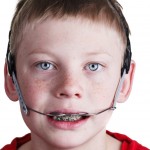
The application of extra-oral traction to the maxilla for the treatment of class II malocclusions has been in use for many years. Headgear has been reported to modify maxillary growth in both the sagittal and the vertical direction while rotation of the palatal plane and changes in the anterior face height have also been reported.
The aim of this review was to assess the effect of orthopaedic treatment of Class II with extraoral traction delivered to the maxilla with headgear appliance and compare it to untreated Class II patients.
Methods
Searches were conducted in the Medline, Cochrane Library, Virtual Health Library and IS Web of Knowledge databases supplemented with searches of Scopus, Google Scholar, ClinicalTrials.gov, and ISRCTN registry. No limits on publication date or language were applied. Parallel randomised or prospective non-randomised trials comparing any type of headgear appliance to an untreated control group in human patients were considered.
One review selected studies with independent duplicate checking by the other reviewers. Data was extracted independently by the reviewers with risk of bias being assessed using either The Cochrane risk of bias tool or ACROBAT-NRSI (A Cochrane Risk Of Bias Assessment Tool: for Non-Randomized Studies of Interventions) tool. Random-effects meta-analyses of mean differences (MDs) and relative risks (RRs), and were subgroup and sensitivity analyses were carried out. The overall quality of evidence for each of the main outcomes was rated using the GRADE approach
Results
- 18 trials (5 RCTs, 13 prospective non-randomized studies) reported in 47 papers were included.
- The trials included a total of 930 patients with mean ages ranging from 7.6 -12.9 years.
- 9 studies used a high-pull headgear, 5 cervical and 3 a combi-headgear with 1RCT using either a high-pull or a cervical headgear.
- Serious risk of bias was found in 4 of the 5 randomized trials for at least one domain and for multiple domains of all non-randomized trials. Lack of blinding for the outcome assessors was the most problematic for all types of trial.
- For short-term annualised cephalometric effects – Early headgear treatment was associated with a significant reduction in the SNA angle MD = −1.63°/year; (95% CI; −2.20 to −1.06°/year) , a significant posterior rotation of the palatal plane (SN-NL and FH-NL angles), and a significant backward repositioning of the anterior maxilla border (Co-A and Nperp-A distances), while no effect on the nasolabial angle was found.
- Long-term cephalometric effects after a subsequent phase 2 fixed appliance treatment headgear treatment was associated with a minimal reduction in the SNA angle (MD = −0.14°/year; 95% CI = −0.26 to −0.02°/year) and a consider- able retraction of the anterior maxilla border
- Early headgear treatment might decrease the risk of dental trauma during the following years RR = 0.34; (95%CI; 0.14 to 0.80)
Conclusions
The authors concluded
Based on high quality evidence, headgear treatment is associated with a short-term reduction of the SNA angle, which is independent of confounding effects on the subspinale point and is proportional to the degree of the initial discrepancy in the SNA angle. Therefore, headgear might seem like a viable and effective treatment option for the management of Class II malocclusion with maxillary prognathism. Based on evidence of moderate quality, treatment with headgear might decrease the risk of dental trauma during the subsequent years, so this should be taken into account when planning the Class II treatment of patients in high risk of dental trauma. The effect of headgear on the maxillary rotation, the nasolabial angle, the reduction in PAR scores, and signs of temporomandibular dis- orders could not be robustly assessed, due to limited evidence of low quality.
Comments
The review is based on a protocol that was registered a priori, has searched an extensive range of databases and followed a sound methodological approach. Both randomised and non-randomised studies are included and it is interesting to note that elements of the 18 trials are reported in 47 different papers. The quality of the included studies is limited with only 1 of the 5 included RCTs being considered to be at low risk of bias. Given this and the authors highlighting concerns over lack of outcome blinding in almost all of the studies it is perhaps a little surprising that they consider the short-term reduction of the SNA angle to be based on high quality evidence. The finding that early treatment with headgear reduces incisal trauma support the findings of a 2013 Cochrane review by Thiruvenkatachari et al ( Dental Elf -7th Jan 2014).
Links
Primary paper
Papageorgiou SN, Kutschera E, Memmert S, Gölz L, Jäger A, Bourauel C, Eliades T. Effectiveness of early orthopaedic treatment with headgear: a systematic review and meta-analysis. Eur J Orthod. 2016 May 11. pii: cjw041. [Epub ahead of print] Review. PubMed PMID: 27169757.
Other references
Original review protocol on PROSPERO database
Dental Elf -7th Jan 2014
Early orthodontic treatment may reduce incisal trauma in children with class II malocclusions

Headgear treatment for Class II malocclusions? https://t.co/ESfhNuXJCT
[…] 0 0 0 http://www.nationalelfservice.net/dentistry/orthodontics/headgear-treatment-class-ii-malocclusions/ […]
Headgear treatment for Class II malocclusions? https://t.co/fikEfTsIlk
Treatment of Class II malocclusions with extraoral traction? https://t.co/fikEfTsIlk
Extraoral tractions for Class II malocclusions? https://t.co/fikEfTsIlk
Orthopaedic treatment of Class II malocclusions with extraoral traction? https://t.co/fikEfTsIlk
Don’t miss-Headgear treatment for Class II malocclusions? https://t.co/fikEfTsIlk